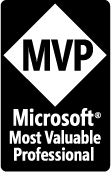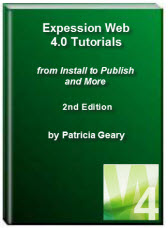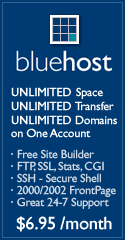- Home
- Expression Web Tutorials
- Installing Expression Web 4
- Setting Up Expression Web 4.0
- Create New Website
- Create a Blank Web Page
- Create a Webpage Layout
- Adding Horizontal Top Navigation
- Adding Vertical Navigation
- Validating Your Pages
- Creating an Expression Web Dynamic Web Template
- Publishing Your Web Site
- How to back up your local website on your hard drive
- SEO Checker and Report
- Adding Insert Include Code into Code Snippets
- Auto Thumbnail in Expression Web
- Broken Dynamic Web Templates and hidden metadata files
- Code Snippets in Expression Web
- Compatibility Checker on Status Bar in Expression Web
- Create and Style a Data Table
- Creating a New Font Family Group
- Creating a New Page from Hyperlink Properties
- Creating web site from site templates in Expression Web
- CSS Properties panel
- Expression Web Preview in Browser
- Expression Web and Design Time Includes
- How to back up your local website on your hard drive
- How to create a Personal Web Package
- Import Site Wizard in Expression Web
- Importing your folders/files into Expression Web
- Inserting Images in Expression Web
- Interactive Buttons in Expression Web
- Migrating a FrontPage Site to Expression Web
- Modify Style Dialog Box
- New Style Dialog Box
- Publishing Your Website from the Remote Server with FrontPage Server Extensions
- Editing Reusable Forms
- Troubleshooting Image Problems in Expression Web
- Validation Error - no attribute "xmlns:v"
- Web Album Generator and Expression Web
- What are all the style# in my page?
- Zoom Search and Expression Web
- Working With Left Border Background Images
- Resources
- Templates
- Web Design Tutorials
- Accessible Forms
- Add a Search Box
- Adding Google Search
- Accessible Data and Layout Tables
- Responsive Tables
- Anchor Tags and Name Attributes
- Best Font Size for Web Design?
- Center Page in Browser Window
- HTML Lists
- How to create and extract a Zip File in Windows
- How to Create a Self-Extracting Zip File
- Validation Error - no attribute "xmlns:v"
- Working With Left Border Background Images
- Handle Background Transparency in Snagit Editor Like You Would in Photoshop
- Bluehost Tutorials
- Add-on Domains at BlueHost
- BlueHost 301 Redirects
- BlueHost Webmail
- Customizing BlueHost Error Pages
- How to make a subfolder the main folder for your BlueHost main domain
- How to change the Primary Domain
- Installing a WordPress Blog Using Simple Scripts
- Mannaging SSL on BH
- Password Protecting Directories and/or Files with Bluehost
- Server Side Includes, BlueHost, and Expression Web
- Expression Web Addins

Anchor Tags and Name Attributes in Expression Web - Bookmarks in Expression Web
Anchor Tag - HTML <a> Tag
HTML uses the <a> (anchor) tag to create a link to another document. An anchor can point to another html page, an image, a text document, or a pdf file among others.
Example of an anchor tag: <a href="url">Text to be displayed as link</a>
The <a> tag is used to create an anchor to link from, the href attribute is used to address the document to link to, and the words between the open and close of the anchor tag will be displayed as a hyperlink.
The example defines a link to the home page of this site.
Example: <a href="http://www.expression-web-tutorials.com/">Expression Web Tips, Tutorials, and Templates</a>
The default of the anchor tag is to go to the top of the document it points to.
Name Attribute
The name attribute is used to create a named anchor. When using named anchors you can create links to a specific section on a page, instead of letting your viewer scroll around to find what he/she is looking for. Named anchors are called bookmarks in Expression Web.
NOTE: Not supported in HTML5. Use the global id attribute instead. Specifies the name of an anchor
Example of a named anchor tag: <a name="anchor">Text to be displayed as link</a>
The name of the anchor can be any text you care to use. However, it should not have spaces in the name. Use a hyphen or underscore and all lowercase letter. Expression Web uses an underscore as the default.
Example: <a name="css-tutorials">CSS Tutorials</a>
A named anchor is not displayed in any special way.
To link directly to the "css-resources" section of the page on tutorials, add a # sign and the name of the anchor to the end of a URL, like this:
<a href="http://www.genealogy-web-creations.com/tutorials.htm/#css-resources">Cascading Style Sheet Resources</a>
or like this if you are creating a link to a place in the same document
<a href="#css-resources">Cascading Style Sheet Resources</a>
Bookmarks or Named Anchors in Expression Web
Named anchors are called bookmarks in Expression Web.
How to Add or Remove a Bookmark in Expression Web
A hyperlink can go to a particular location on a web page by linking to a bookmark (HTML anchor) at the location. The link can be to a bookmark on the same page or to one on a different page. You can add a new bookmark and manage existing bookmarks in the current web page by using the Bookmark dialog box.
When you bookmark a selection of text, the text displays with a dashed underline in Design view.
![]()
<a name="10-bible">10. Family Bible,</a> C. H. Davis, Pasadena, California.
If you insert the bookmark before the text you want without selecting it first, the text is no longer formatted as a link but the bookmark will still function
![]()
<a name="10-bible"></a>10. Family Bible, C. H. Davis, Pasadena, California.
Notice the placement of the closing tag within the code. Choose the method you use depending on how you want the bookmarked text to display.
When you bookmark an empty location, the bookmark is indicated in Design view by a bookmark icon when Show and Paragraph Marks are both selected under Formatting Marks on the View menu.
![]()
To create a bookmark
Step 1 - Open the web page in either Design view or Code view.
Step 2 - Select the text to which you want to assign a bookmark OR place your cursor in an empty space next to the text you want to use as a bookmark.
Step 3 - Insert | Bookmark or CTRL + G. In EW4 use Ctrl + Shift + G.

Step 4 - In the Bookmark dialog box, under Bookmark name, type a name for the bookmark. If you have selected more than one word, the default for Expression Web is to use the selected text separated with an underscore.

To remove a bookmark
Step 1 - Open the web page in either Design view or Code view.
Step 2 - Insert | Bookmark or CTRL + G NOTE: This only worked when I first highlighted the bookmark > Selected Go To and then
Step 3 - Under Other bookmarks on this page, click the bookmark you want to delete. Click Clear.

Tip - You can also remove a bookmark that's selected in your web page by pointing to the tag that appears in the Quick Tag Selector bar at the top of the web page, and then click the arrow next to the tag and select Remove Tag.


Copyright © 2007 Pat Geary of
Genealogy Web Creations All Rights Reserved
Revised: January 2011
Expression Web 4.0 Tutorials 2nd Edition from Install to Publish, a FREE EBook by Pat Geary.
Expression Web has a group on Facebook. If you are a FB user, come join us.
Disclosure: This is an affiliate link, which means that if you visit Bluehost.com through this link and purchase this product, I’ll get a commission.

April 2007 - April 2013
Privacy Policy | Migrating from FrontPage to Expression Web
Microsoft® and Expression Web® are registered trademarks of Microsoft® Corporation.
Site Design & Maintenance : Expression Web Tutorials & Templates


